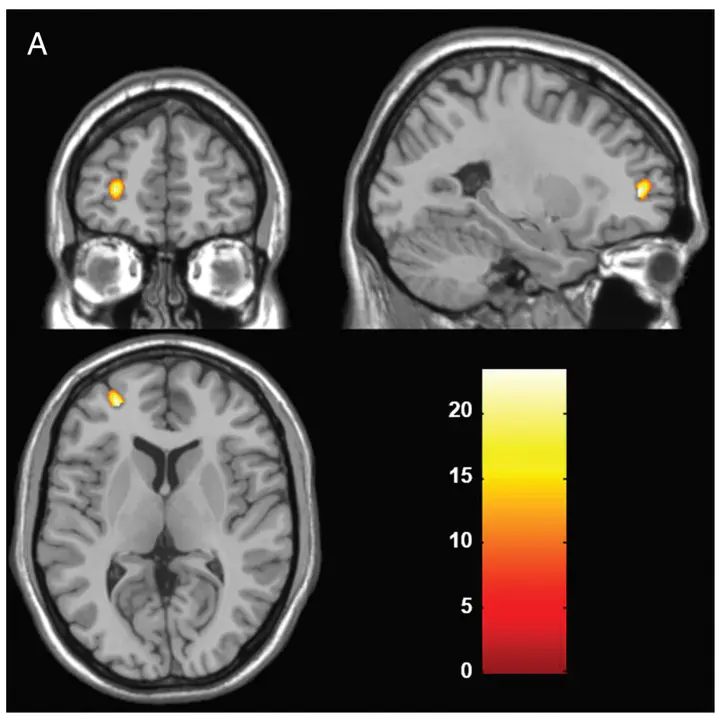ALDH2 Glu504Lys Confers Susceptibility to Schizophrenia and Impacts Hippocampal-Prefrontal Functional Connectivity
 group comparison analyses
group comparison analysesAbstract
Although previous evidence suggested that ALDH2 is a candidate gene for schizophrenia, the association and underlying mechanisms have never been investigated. Therefore, we investigated ALDH2 as a susceptibility gene for schizophrenia and explored the effect of its polymorphisms on brain functions. In the discovery stage, we detected a positive association between a dominant-negative mutant, Glu504Lys, and schizophrenia (P= 8.01E−5, OR = 1.34, 95% CI = 1.16–1.55). This association was confirmed in the validation stage (P= 3.48E−6, OR = 1.28, 95% CI = 1.15–1.42). The combined P reached a genome-wide significance (Pcombined= 1.32E−9, OR = 1.30, 95% CI = 1.20–1.42). To investigate the neural mechanism linking Glu504Lys to schizophrenia, we calculated the functional connectivity (FC) and applied an imaging genetics strategy using resting-state fMRI data. The imaging analysis revealed a significant interaction of diagnostic group by genotype for FC between the left hippocampus and the prefrontal cortex. In the Glu homozygotes, hippocampal-prefrontal FC correlated inversely with memory performance in the healthy controls and with the PANSS negative score in the schizophrenia patients. Our results supported a role for ALDH2 in the pathophysiology of schizophrenia. Moreover, variation at Glu504Lys disrupts hippocampal-prefrontal FC, which might be the neural mechanism linking it to the disease.